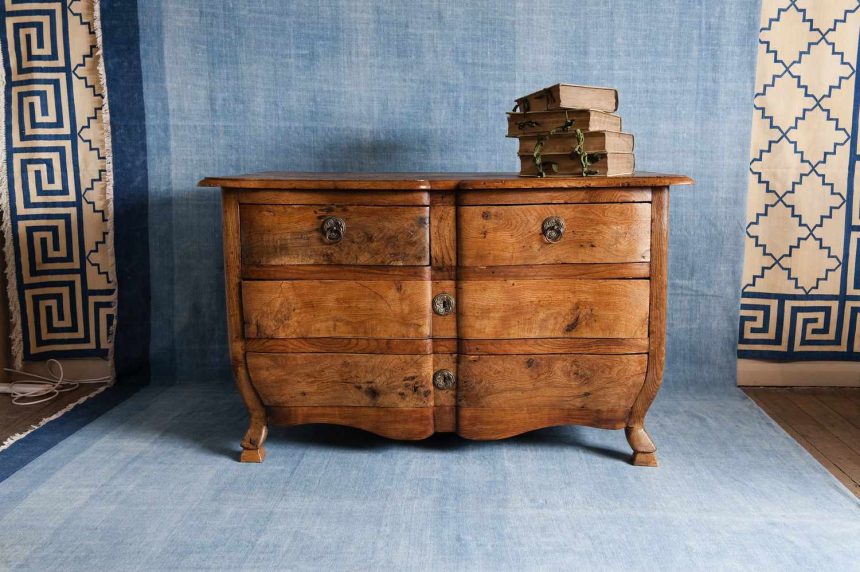We will guide you through the steps involved in starting antique furniture restoration and polishing. Including the tools you’ll need and how to remove paint or stains from furniture.
It’s important to know your furniture’s popularity
It’s critical to understand the popularity of your furniture. During the early 20th century, popular styles included Arts & Crafts and Midcentury Modern. In order to properly restore an antique or vintage piece that doesn’t fall into one of these two categories. You should learn about its style.
Popular furniture pieces include desks, tables, and chairs—especially rocking chairs—which are items. That people use on a daily basis in their homes and workplaces! You may also find yourself doing restoration work on dressers or cupboards. If they blend in with the rest of your collection, these pieces can be excellent additions.

Restoring or refinishing an antique piece of furniture is a big job
An antique furniture restoration or refinishing is a major task that requires careful attention to detail. It might be necessary to replace any damaged parts, refinish the item, fix any broken hardware or finishes. And even replace any torn or discolored fabric.
Thoroughly examine the piece before determining if it’s worth restoring; look for loose joints and wooden cracks (wood glue can typically repair the latter). If there are any structural issues that are difficult to fix. If one leg is shorter than the others, for instance, you might prefer to sell it as-is rather than investing money on repairs that won’t really increase its worth.
What tools do you need?
Antique Furniture Restoration Guide can be difficult to start, but it’s not too difficult to refinish furniture provided you have the right equipment and supplies.
Here’s what you’ll need:
Power tools are optional. Go ahead and use power equipment, such as an electric drill or jigsaw, in place of manual ones to expedite the procedure! However, keep in mind that these instruments can be hazardous if handled carelessly; if you’re not comfortable using them, stick to hand tools.
Finishing materials. A few things will be needed to help you complete your project. To sand down surfaces before staining and painting them, for instance, you’ll need paper and sandpaper; rags or old garments for spill cleanup and brush cleaning; brushes for stain, varnish, or paint application; and topping for increasing the life of the completed piece.
How to get rid of water rings and other stains on wood
It can be difficult to get rid of water rings and other stains on wood. Use a moist rag to clean the stain and then a gentle brush to remove any leftover dirt if you want to get rid of water rings. Use an oxalic acid-containing wood cleaning solution (such as Barkeeper’s Friend) if the stain is still noticeable. Before using it again, use a gentle towel to remove any leftover liquid and allow it to dry.
Before you start, make sure you have all the right supplies on hand
Make sure you have all the supplies you need before you start. What you’ll need is an excellent toolbox and a range of hand tools, such as pliers, wrenches, screwdrivers, and hammers.
For removing paint and other finishes from wood surfaces, sandpaper comes in several grits, ranging from coarse to fine.
Use wood filler to fill gaps or holes in furniture after sanding away paint or varnish layers to reveal the piece’s original state. Ensure the filler suits the subsequent finishes.
If working with paints, varnishes, or similar substances, use a respirator mask; these materials can contain toxic chemicals that are harmful for humans to breathe in for extended periods of time. Investing in goggles or protective lenses may also be a good idea because they will help keep dust out when working on tasks like this one, where particles may easily get everywhere!
How to strip a piece of furniture that has been painted or stained
An old paint can be cleaned with a paint stripper. Another option is a chemical remover, but it isn’t as good as the previous one.
Your best option might be to use a heat gun if you want the task done quickly. It will act as a softener, making the old finish easier to remove using sand or scraper blades (see below). The drawback of the method is that it takes some expertise and knowledge to remove the topcoat finish goods from your piece of furniture without ruining its surface.
But if you already have those abilities, then by all means! Just keep in mind that heating wood over a fire can result in severe burns or even ignite the wood itself. To avoid the risk of overheating yourself in real life, only utilize low temperatures while using any type of heat source, such as this one.
Be careful when working with antique hardware
It’s crucial to take your time and think over the best ways to restore your antique furniture, just as with any endeavor. Make sure the object is sturdy and is able to be moved about before you start (if necessary).
Keep in mind that working on antique furniture should never involve the use of power tools! Try using fine grit sandpaper to sand down any paint rather than a power sander or any other instrument that can harm the wood.
Apply metal polish to metal hardware as well; however, stay away from abrasive chemicals as they may do more harm than good in this situation. Lastly, a little oil can go a long way toward cleaning grimy wooden elements like knobs and handles. Just be gentle!

How to refinish wood floors in your home
Your home’s wood floors need to be treated before you can refinish them. Take everything off the floor, including the furniture. Take out any tape residue, baseboards, molding, trim, and nails and screws. Your entire floor should be completely cleaned before using an orbital sander to sand it down.
Antique Furniture Restoration Guide: Conclusion
We hope that our guide on antique furniture restoration has made it easier for you to comprehend the refinishing and restoration procedure. Though it’s a big task, it is feasible!





